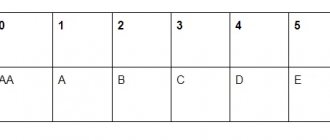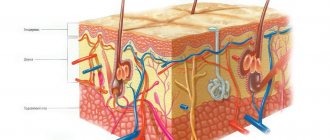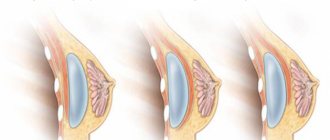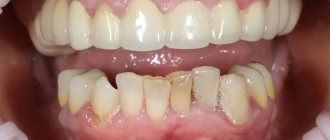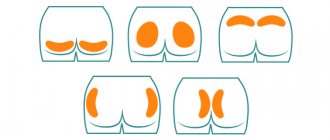Any surgical intervention is a serious stress for the whole body. Unfortunately, dental implant surgeries are no exception. Even the implementation of the most expensive and high-quality implant, carried out perfectly by the best doctor, can cause complications in the postoperative period.
It is very important for the patient to identify at an early stage the processes that signal certain complications with the installed implant. Although this is very difficult to do, since the first symptoms of many postoperative complications may be invisible against the background of sensations and processes associated with healing of the implantation site.
However, it is extremely important to notice the complication at an early stage: the longer the patient does not notice or ignore unusual symptoms, the more difficult the consequences can be. It is the inattention of patients to the first manifestations of postoperative complications that ultimately leads to these complications turning into serious consequences, including removal of the implant.
What are the causes of postoperative complications during implantation? What might their consequences be? How to avoid complications or detect them at an early stage? What symptoms indicate the need for an urgent visit to your doctor? In this article we will try to provide comprehensive answers to these questions, as well as give useful tips on how to protect yourself as much as possible from postoperative complications during implantation.
What is the cause of complications after implantation?
The main reason for all postoperative complications when installing an implant is its rejection by the body. The cause of this process can be both medical errors and the individual characteristics of the patient’s body.
To understand why the body may reject an implant, we need to look at how the human immune system works. The task of the immune system is to identify foreign elements (both organic and inorganic origin) that have entered the body and destroy them. When immune cells detect damage to a person’s integumentary tissue, they immediately begin the process of fighting infectious agents that enter the blood through the wound. Inflammation (redness, swelling, increased temperature) of wounds during healing is a consequence of the work of the immune system.
If, during healing, large (compared to bacteria) foreign inorganic objects are present in the wound (splinters, pieces of metal, wood, and even grains of sand), then the body, with the help of immune cells, will reject these objects, “pushing” them out of the wound. Unfortunately, dental implants embedded in the bone are also foreign objects to the body.
In order to reduce the risk of the body's immune response to the implant, bioinert materials are used for its manufacture. These are materials that are implanted into the body as quickly as possible, without causing protective reactions and inflammation and without changing metabolic processes in the tissues surrounding the implant. However, such materials can cause rejection for several reasons, such as:
- individual patient reaction to the implant material;
- an allergic reaction to the implant material or medications used for pain relief and disinfection of the implantation site;
- inflammation around the implant associated with an infectious process.
In addition to natural causes of implant rejection, there is also a risk of a doctor’s error or oversight during surgery:
- incorrectly chosen implant design;
- not removed inflamed tissue around the implantation site;
- low quality instruments and implants;
- violation of rules regarding the sterility of instruments and equipment during implantation;
- inattention to the patient (ignoring complaints, information about diseases, allergies).
But patients can also make a number of mistakes and actions that can lead to implant rejection:
- ignore the doctor’s advice on caring for the oral cavity and the implant, particularly in the postoperative period;
- do not observe the rules of dental and oral hygiene;
- violate or interrupt the course of medications prescribed by a doctor;
- receive jaw injuries that trigger the process of implant rejection.
Gravity force
Gravity affects both small and large breasts equally. The larger the breast mass, the greater the effect gravity has on the soft tissue. The silicone gel that fills the implants is close to unity in density, which means its mass is approximately equal to the mass of water. Relatively speaking, all implants over 350g can be called heavy. Such implants greatly stretch the soft tissue of the breast, which can lead to displacement of the implants downwards, which is accompanied by visual overfilling of the lower pole of the breast and tilting of the areola upward, and sometimes the formation of a double fold. When installing large implants, the surgeon must keep this in mind and take preventive measures.
How to identify postoperative complications? Characteristic symptoms of implant rejection
The first thing to know about implant failure is that it does not necessarily start immediately after surgery. It may take months or even years after the implantation of a denture before the first symptoms of rejection appear. However, the first signs that the implant is not taking root may appear during the healing period, which can greatly complicate the diagnosis.
The following symptoms indicate problems with implant healing:
- swelling of the gums and swelling at the site of implantation (may appear during the healing period even if implantation is successful);
- inflammatory process in the gum, change in its color, unpleasant odor from the installation site;
- bleeding at the implant site (possible in the first few days after successful implantation);
- discharge of pus from the gums at the implantation site;
- strong pain.
As you can see, some of the symptoms are characteristic of the normal course of the postoperative period. Therefore, in order not to miss the onset of inflammatory processes and not to start the rejection process, it is important to inform the doctor about all changes in the condition in the postoperative period.
Muscle traction
A very common reason for an implant to move upward. In order for this reason to become the main one, three components are necessary:
- small implant volume
- Full axillary implant pocket
- strong pectoralis major muscles
A small implant is less affected by gravity. The implant, located completely under the muscle, experiences the compressive effect of the pectoralis major muscle and tends to move after the contracting muscle. A strong muscle that is in good tone enhances all of the above reasons.
How to avoid problems with implant healing?
As you can see, there are many reasons why the implant installation process can cause complications. Unfortunately, there is no way to 100% protect yourself from additional problems after an implantation procedure, but you can minimize the risk of complications by adhering to the following recommendations.
- Do not refuse additional examination (tests for allergic reactions, additional x-rays, etc.) before surgery: it can reveal diseases that can cause complications.
- Follow all instructions and recommendations of your attending physician for the postoperative period. Do not interrupt the prescribed course of medication.
- Contact your doctor immediately if you experience any unusual symptoms after surgery. Even if the symptoms turn out to be normal for the healing process of wounds at the implantation site, it is better to double-check this than to miss the onset of rejection.
- Be careful about oral and dental hygiene.
And, perhaps, the very first and most important thing is to choose the right clinic. The high professionalism of doctors, their attentiveness to patients and advanced technologies guarantee that the risk of complications will be almost zero.
In professional clinics such as VivaDent, before any operation, including implant installation, a detailed treatment plan is always drawn up. The plan is discussed with the patient, and when drawing it up, all the characteristics of the body are taken into account. Information about the patient’s various diseases (including allergies), both obtained during the survey and during additional examination, is always taken into account by professional doctors when planning treatment.
Carefully study the information on clinic websites, as well as reviews about them on the Internet, before agreeing to implantation. After all, only a truly professional approach can guarantee maximum protection against possible complications.
Features of the soft tissues of the breast
These are extremely important characteristics that the surgeon must consider. There are about 50 characteristics of soft tissues. Let's list the most important ones.
- extensibility
- elasticity
- turgor
- elasticity
- condition of the ligamentous apparatus of the mammary gland
All together, these characteristics can be combined under the name “resistance” of soft tissue to the mass of the mammary glands. Moreover, regardless of whether the bulk of the mammary glands is represented by a gland or an implant.
The surgeon must determine as accurately as possible the limit that the soft tissue of the breast can withstand without overstretching and, accordingly, disturbing the shape of the breast. Surgeons have a lot of surgical techniques in their arsenal that will allow them to fix any implant in the correct position. You just need to use them correctly.
Spacer resorption
One of the most common complications of sinus lift, which is closely related to the presence of perforations in the mucous membrane. The normal loss of volume of osteoplastic material is considered to be 15-30% of the total amount of spacer. A more significant leaching of material is considered a complication, which nullifies the result of sinus lifting.
This unfavorable outcome of the operation cannot be noticed from the outside, since it is asymptomatic. In order to identify the problem in a timely manner, the dentist should prescribe patients a repeat CT scan to assess the condition of the operated area. If resorption does occur, then repeated surgery is performed after some time.
Treatment
An x-ray allows the dentist to understand exactly what the problem is. Mostly, complications are caused by inflammatory processes. Anti-inflammatory therapy, antiseptic surface treatment, and hygienic care are carried out.
In case of peri-implantitis, inflamed tissue is removed, the pin is cleaned and treated with an antiseptic.
In some cases, complications after dental implantation require removal of the post. For example, if the implant breaks, it is rejected, or treatment of inflammatory processes is not successful.
The implant is removed by carefully twisting it out of the bone, trying to minimize trauma to surrounding tissue.
The issue of re-implantation is considered in each case separately. Most often, a two-stage protocol is impossible without bone grafting. But with the one-step method, you can do without it. In any case, you will have to wait until the inflamed tissues recover. However, it should not be delayed to avoid bone loss.
The decision to re-implant after removal of a dental implant must be made by the doctor. It takes into account all the factors necessary for the success of the operation. If rejection is caused by biological reasons, low immunity, smoking, then the positive result of re-implantation is in doubt and it is better to use alternative prosthetic methods.
Pain
Pain syndrome of varying degrees of intensity occurs in every patient who has undergone a sinus lift. On average, the duration of discomfort is a week. The main sign of the physiological rehabilitation period is a gradual decrease in pain, regardless of the initial level. If the patient gets worse, he should immediately go to the doctor.
Pain syndrome can be relieved with various analgesic drugs. They must be taken strictly according to the instructions, following additional recommendations from the dentist. If the medicine does not help or does not relieve pain sufficiently, you should consult your dentist, but do not increase the dosage yourself.
Prevention
After implantation surgery, your doctor will prescribe you certain medications that will help minimize the possibility of these complications occurring. The main thing is to follow the doctor’s recommendations, carefully examine the surgical area, try to avoid solid foods (crackers, nuts), and monitor oral hygiene (carefully brush your teeth, rinse your mouth after eating). If something worries you, you should definitely contact a specialist, and not self-medicate or search for answers on the Internet. Doctors at the Golden Section clinic are always ready to answer all your questions.
What can happen during surgery
No matter how expensive and high-quality implants are, complications during surgery depend on the qualifications of the implantologist. This is why choosing a doctor is so important. Experienced doctors practically never have misfires in the form of:
- Bleeding
due to vessel damage
Bleeding may be associated with increased blood pressure and poor blood clotting. However, in the vast majority of cases, vessel rupture occurs due to surgeon error.
- Perforation of the maxillary sinus
In the upper jaw there is little bone for installation; it often has to be replanted (sinus lift). When implanting upper teeth, it is easy for the doctor to make a mistake and drill a hole that is too deep. 3D modeling and surgical guides, coupled with the surgeon's experience, significantly reduce such cases.
- Nerve injury
When working on the lower jaw, there is a possibility of touching the alveolar, mental or lingual nerve. This leads to numbness. This is why implantologists insist on performing a CT scan before surgery, this helps to make accurate measurements in the area where the pin is being implanted.
Alveolar wall
The result of an incorrectly selected implant size.
Modern technologies: 3D modeling, surgical templates, CT and orthopantomogram virtually eliminate operational errors.

